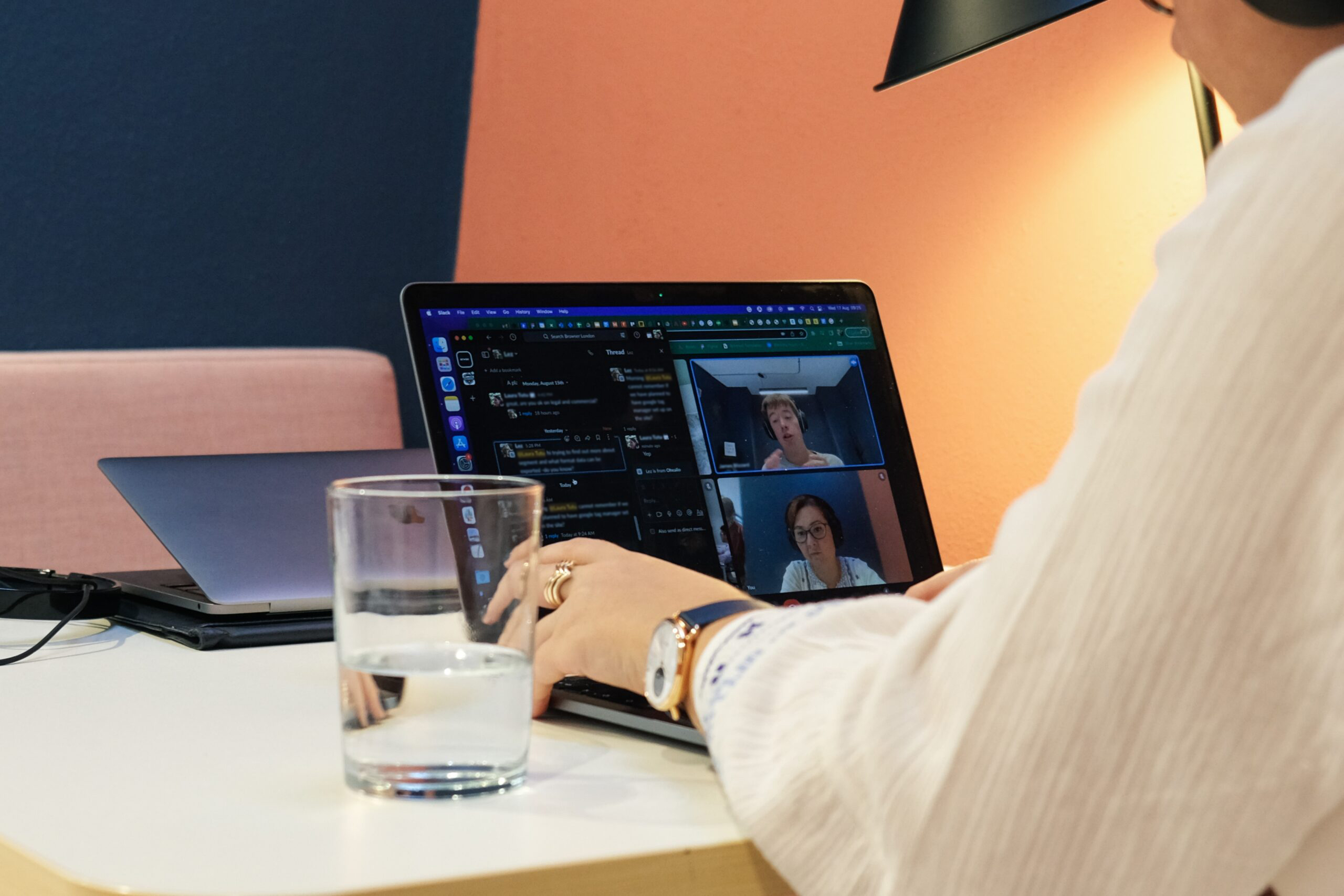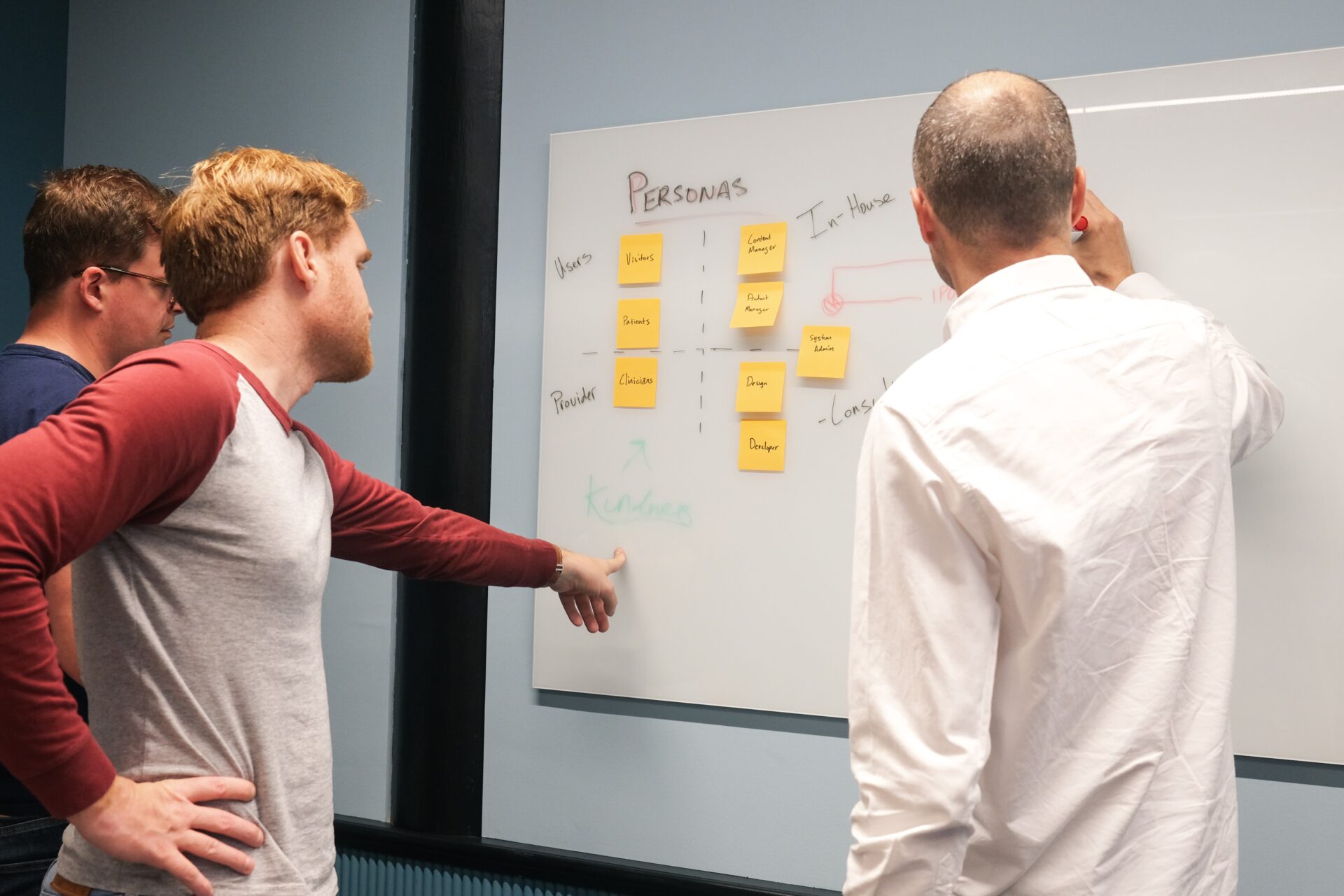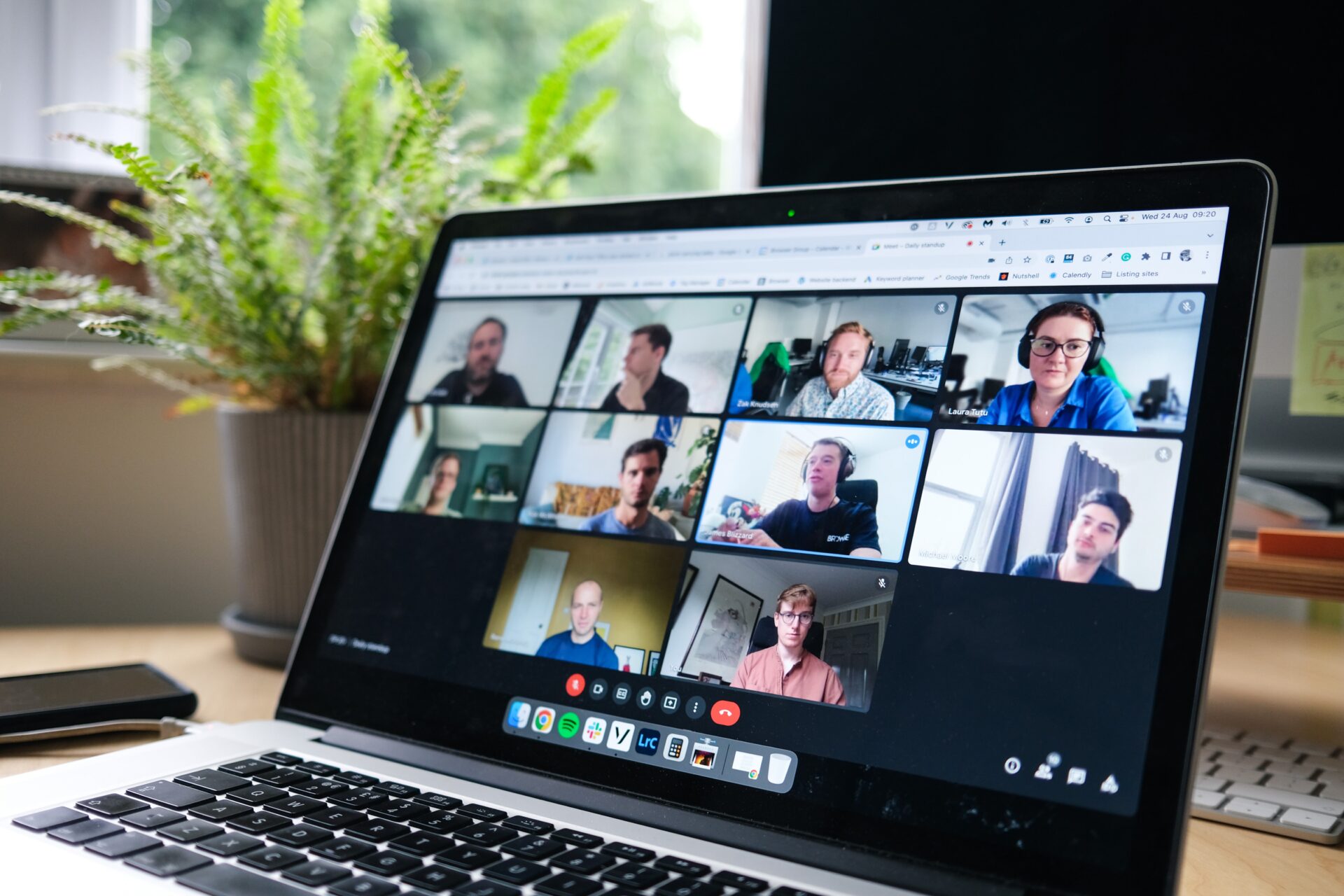Is a remote research workshop as good as an in-person one?

With the pandemic forcing many of us to work remotely, there have been numerous challenges to existing work patterns and processes. As a digital agency committed to going pretty deep in our discovery phase to craft the best possible digital experience for our clients, carrying out all our user and stakeholder research required a shift both in practices and in mindset.
In this article, we’re going explore the ins and outs of carrying out a completely remote discovery workshop, and while we still believe an in-person workshop yields richer results, going remote has its distinct advantages too.
The power of research
When we do our user research, we want to really get under the skin of what we’re tackling. We want to know about the pain points, the user journeys, the different perspectives of audience segments, the likely behaviour of customers – all those things that can influence design and features. Then, later in the overall project after the discovery phase, we want to maintain those touchpoints and levels of engagement with groups of users as we prototype, build and test. But doing that wholly remotely can feel like we’re a step removed from our target audience compared to when we’re with them in the room.
Of course, before the pandemic, a proportion of our research during a discovery period was done virtually anyway. Interviews and some user workshops might need to be conducted remotely because participants are located in different countries or the logistics make an in-person workshop infeasible.
But even in scenarios where stakeholders and users are distributed widely, we still try and carry out some user research in person to get that deeper dive that provides richer information, helping us to fill gaps in our understanding, challenge any assumptions and test our hypotheses.
Our remote toolset
Having the right tools to support a remote workshop is critical. Most of these will already be in the arsenal of most digital agencies or UX teams, and there are a number of different alternatives. The particular tools we use include:
- Miro for whiteboarding and sprint planning
- Figma for detailed UX planning and design
- Google Meet for virtual meetings
- Avion/Clickup for user story planning and mapping.
In-person vs remote?
In considering the relative merits of in-person and remote workshops, we’d reflect that our perceptions have changed over the past two years as we’ve carried out more in-depth workshops virtually. During this time, we’ve continued to deliver projects with successful outcomes without compromising on the insights gained from the discovery process. In fact, we’ve come to appreciate aspects of the remote workshop that you don’t get from being face-to-face, which we’ll explore below.
Advantages of in-person user workshops
Signals and observation
One of the advantages of in-person workshops is the ability to fully observe the reactions of participants and get a richer appreciation of their thoughts. There are many well-worn arguments about the proportion of communication that is non-verbal, with a commonly quoted statistic saying that only 7% of communication is verbal. While some have argued that applying this statistic to communication is flawed, we certainly find being in the room helps us to:
- Understand more fully how users react to different questions
- Observe nuances of user behaviour
- Get a better sense of the emphasis and prioritisation placed on feedback and input.

Focus and engagement
The ideal user workshop is one where your participants are engaged and focused. They should enjoy the experience, and it should help them think about how they carry out their work and how they interact with digital tools and channels. An engaged set of participants helps to:
- Drive better, richer and more meaningful and honest contributions
- Secure contributions from as many attendees as possible
- Make it more likely that they will participate in further workshops or give follow-up feedback.
In our experience, focus and engagement are usually easier to achieve in an in-person meeting. Everyone is more likely to be fully present without the inevitable distractions that occur during a virtual meeting, and the collective engagement of the group can help contribute to a successful outcome. Sometimes, the physical activity of adding post-it notes to a wall can also help keep up the energy in a workshop.
More specifically, it’s also easier for a facilitator to spot when attention is flagging or if some participants are not actively contributing, perhaps because a couple of individuals are dominating. You can then apply tactics and corrective actions to bring back attention and get everybody involved.
Length and momentum
One of the distinct advantages of an in-person workshop is that it can be longer than a virtual session, which means you and the participants can get more out of it. Depending on the kind of activities you’re carrying out, you can have a workshop that goes on for half a day or even a day, allowing you to go beyond discovery and involve users’ brainstorming and solution ideas, such as in a design thinking workshop.
This is far less achievable in a virtual setting where it is very hard to maintain the attention of users for that long, and carrying out a series of activities over three or four separate virtual sessions loses momentum. You also lose the dynamics and chemistry that can occur across a group face-to-face.
Advantages of virtual user workshops
Reach and diversity
A lot has been written about the importance of diversity for successful collaboration and innovation. Because a virtual workshop does have a far wider potential reach than an in-person equivalent, you can involve a more diverse group in your user research. Particularly if you are brainstorming in a workshop, having a range of different roles, levels, backgrounds and perspectives will produce much better results.
A virtual workshop might also better support neurodiversity, with some users unable or reluctant to participate in person. Additionally, having physical disabilities may prevent some participants from attending an in-person workshop.

Cost and convenience
An obvious advantage of a virtual workshop is that it is far cheaper. There is no room cost, no lunch to provide and no travel involved, and the collective time spent by everybody is going to be far less. It’s also going to be considerably more convenient for participants who don’t have to take so much time out from their busy schedule which can sometimes reduce the number of attendees. In practice, this means you can secure higher levels of participation, involve more users in your discovery phase and appreciate the diversity within a user group.
You can record the outcome
A clear advantage of the virtual format is that you can record the outcome. This can be useful for analysing data and responses from users – especially via a transcript – but also for other project members who didn’t participate in the research to refer to. For example, when your designers and developers can refer to the original source, you can create focused teams working to deliver more user-centric solutions.
A note of caution here is to ensure that everyone is aware that a session is being recorded and also to consider not recording if it is likely to impact participants’ ability to speak freely. In some projects which can get “political”, this may be the case.
The best of both worlds
In-person and virtual user workshops both have their role to play in a digital project, and both have their advantages. An in-person workshop is ideal for a deeper exploration of your user research and detailed reactions to your designs. Virtual workshops can also achieve great results – you can hold more of them and involve more people to reflect the diversity of your user population without accruing major costs, although they might not go as deep as longer, face-to-face workshops.
One note of caution is to try and avoid hybrid user workshops which involve both in-person and virtual participants. These are very difficult to achieve and do not create an equitable experience in the workshop, particularly for those attending virtually.
The ideal scenario is to hold both in-person and virtual user workshops within your project, allowing you to gather rich insights from a diverse group, as well as the deeper understanding required to deliver exceptional digital products.